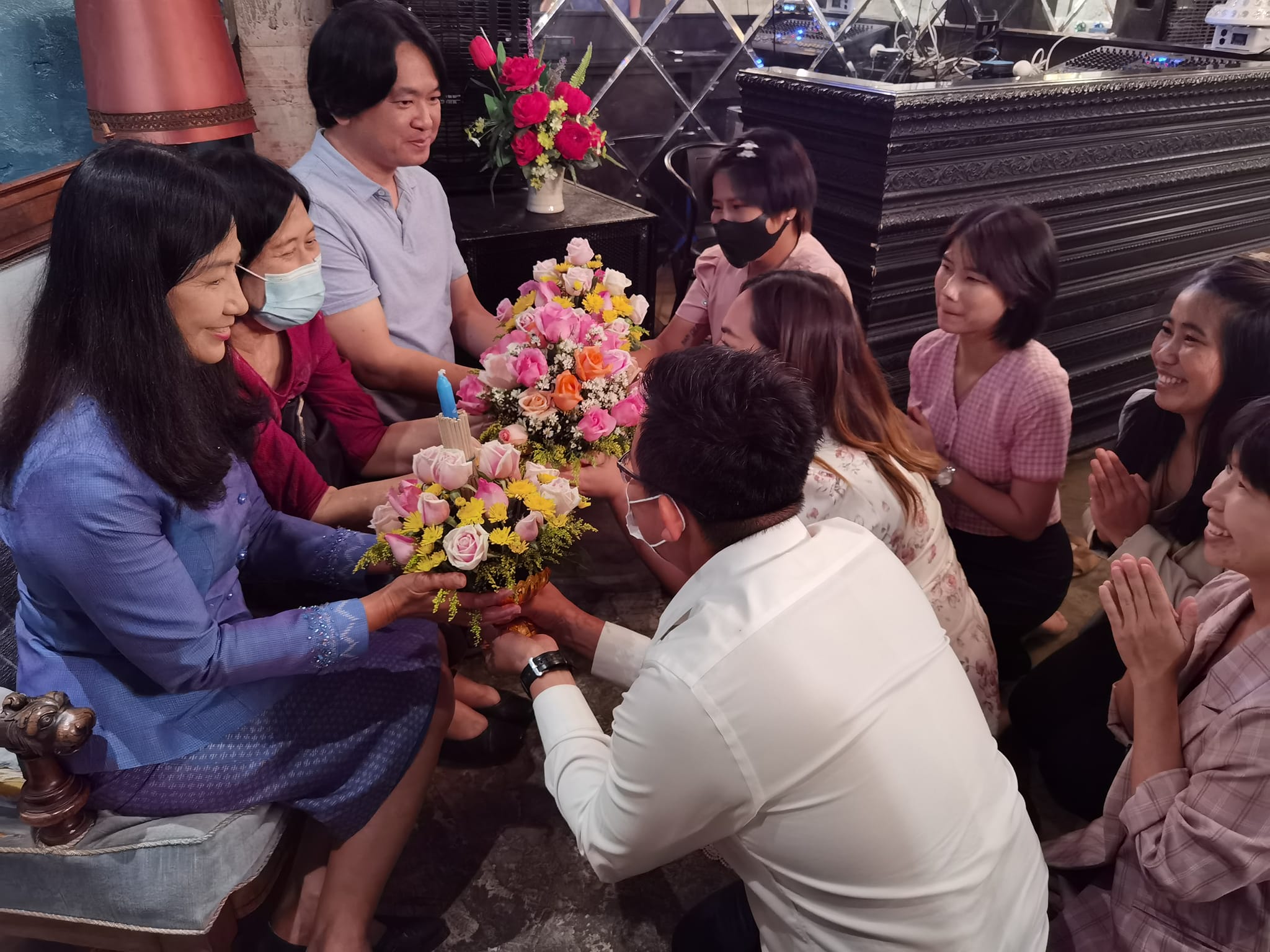The Thai Wai: It’s Spiritual & Cultural Meaning

If you live in Thailand, the traditional “wai” (ไหว้) greeting is a regular part of daily life. We wai so often, however, that it’s easy to lose sight of the greeting’s spiritual and cultural significance. And when that happens, we run the risk of making a casual, perfunctory wai — which potentially could offend the other person if they take notice.
A superficially delivered wai isn’t a faux pas of which only foreign tourists and expats are guilty. Thai people can also at times deliver a wai in a mechanical, rote manner, especially when they are busy, stressed, or have other things on their mind.
It takes diligence and mindfulness always to wai others in a genuine and thoughtful way. To cultivate that mindfulness it helps to have a clear understanding of the spiritual meaning of the wai, and periodically to remind ourselves of its significance.
The Spiritual Meaning of the Thai Wai
The Thai Wai can be understood spiritually as demonstrating the following:
1. Respect and Humility: By performing the wai, individuals demonstrate respect and humility towards each other. This gesture signifies acknowledging the inherent Buddha nature or divine essence present in each person.
2. Acknowledging the Inner Light: In Thai culture, it is believed that there is a spark of divinity within each individual. The wai is a way of recognizing and honoring this spiritual essence in others.
3. Karma and Merit: The act of giving respect through the wai is considered an act of generating positive karma and accumulating merit. Buddhists believe that accumulating merit through virtuous actions can lead to a better future life or spiritual advancement.
4. Mindfulness and Present Moment: When performing the wai, people are encouraged to be mindful and present in the moment, focusing their attention on the act of showing respect and the connection with others.
5. Practicing Loving-Kindness: The Thai wai embodies the spirit of Metta (loving-kindness), which is a fundamental aspect of Buddhist teachings. It represents a genuine wish for the well-being and happiness of others.
6. Nonverbal Communication: In Thai culture, nonverbal communication is highly valued. The wai gesture allows people to express gratitude, respect, and friendliness without the need for words.

How to Wai in Thailand
The wai is a Thai gesture that involves placing your palms together in a prayer-like manner, with the tips of the thumbs positioned at a level between the chin and the eyebrows, accompanied by a slight bow of the head. The positioning of the hands can vary, depending on the social context and the level of respect shown. There are three different “respect” levels for the wai greeting:
Level 1: Wai for Thai Monks and Buddha Images:
The most formal and reverent wai is used when greeting monks in Thailand and paying respects to Buddha images in temples or sacred places. The joined palms are raised high so that the thumbs touch the middle between the eyebrows. The head is bowed deeply, so that it is parallel with the ground, thus showing utmost respect and humility.
Level 2: Wai for Thai Elders and Superiors
When showing respect to elders, teachers, parents, bosses, or people of higher social status, a formal and respectful wai is used. The palms are brought together and raised up to where the thumbs are touching the tip of the nose. The head is bowed about 30 degrees.
Level 3: Wai for Thai Friends and Equals
This is the most common and basic form of the wai greeting used among friends, colleagues, and people of similar age or social standing. The palms are pressed together in front of the chest, with the thumbs touching the tip of the chin. A slight (sometimes imperceptible) bow of the head accompanies the gesture.

When to Wai in Thailand
The Thai Wai is used in various social and cultural contexts to show respect, acknowledge others, and express politeness. Here are some common situations and occasions when the wai gesture is appropriate in Thailand:
Greetings and Farewells: The wai is often used as a greeting in Thailand and a farewell gesture in daily interactions, whether it’s among friends, family members, or acquaintances.
Respecting Elders: When interacting with older individuals, parents, grandparents, teachers, or anyone in a position of authority or wisdom, it’s customary to use a more formal wai to show respect.
Meeting Strangers: When meeting someone for the first time or in a formal setting, a polite wai can be used to establish a respectful tone.
Thanking Someone: To express gratitude or thankfulness, a wai can be accompanied by words of appreciation, such as “Khawp Khun Khrap/Khaa” (thank you).
Apologizing: When apologizing for a mistake or showing remorse, a wai gesture can convey sincerity and regret. It is an important element of Thailand’s face saving culture and the virtue of being “greng jai“.
Visiting Temples: At Thai temples and sacred places, the wai is used to pay respects to Buddha images, monks, and religious objects. The gesture is also used during religious ceremonies in Thailand.
Business and Formal Settings: In business interactions, the wai can be used to show respect to clients, colleagues, and business partners, especially when there is a significant age difference or hierarchical structure.
Special Occasions: During traditional Thai festivals, cultural events, and ceremonies, the wai is an integral part of showing respect and participating in the festivities.
Respecting Monks: When encountering Buddhist monks in Thailand, a deep and reverent wai is appropriate as a sign of respect for their spiritual role.
Receiving Blessings: When receiving blessings from Thai elders or monks, a wai can be performed as a way of expressing gratitude for the blessings bestowed.
Expressing Sympathy: The wai can also be used to express sympathy and support during times of grief or difficulty.

Wai Vocabulary Words in Thai
The Thai word “wai” (ไหว้) is sometimes joined with another word to form a new Thai word. Here are some common examples.
wâi prá (ไหว้พระ): a merit making ritual that frequently involves offerings of flowers and affixing gold leaf to a Buddha image.
gràap wâi (กราบไหว้): [to] worship; pay respect; pay homage
wâi kroo (ไหว้ครู): Wai Khru. An annual ceremony in every Thai school in which students pay respects to their teachers by presenting them with flowers or other gifts.
gaan wâi (การไหว้): salutation; paying respect; paying homage
sâyn wâi (เซ่นไหว้): [to] make offerings
wâi jâo (ไหว้เจ้า): an act of making offerings and showing respect to the spirits, a custom mostly practiced by the Chinese Thais
wâi waan (ไหว้วาน): [to] ask for help; request someone to do something
ráp wâi (รับไหว้): this word refers a to ‘wai’ performed by a senior person when receiving a wai from someone more junior. It is usually performed with the hands around neck or chest height and with less of a bow, if any at all.
wâi pĕe (ไหว้ผี): [to] pay respect to a ghost
nâa wâi lăng lawk (หน้าไหว้หลังหลอก): hypocritical
- The 1st English Dhamma Talk Project, Sakon Nakhon Thailand - July 8, 2025
- Affirmations in Buddhism & Thailand - June 7, 2025
- Speak Thai Naturally Without the Gymnastics - April 20, 2025




